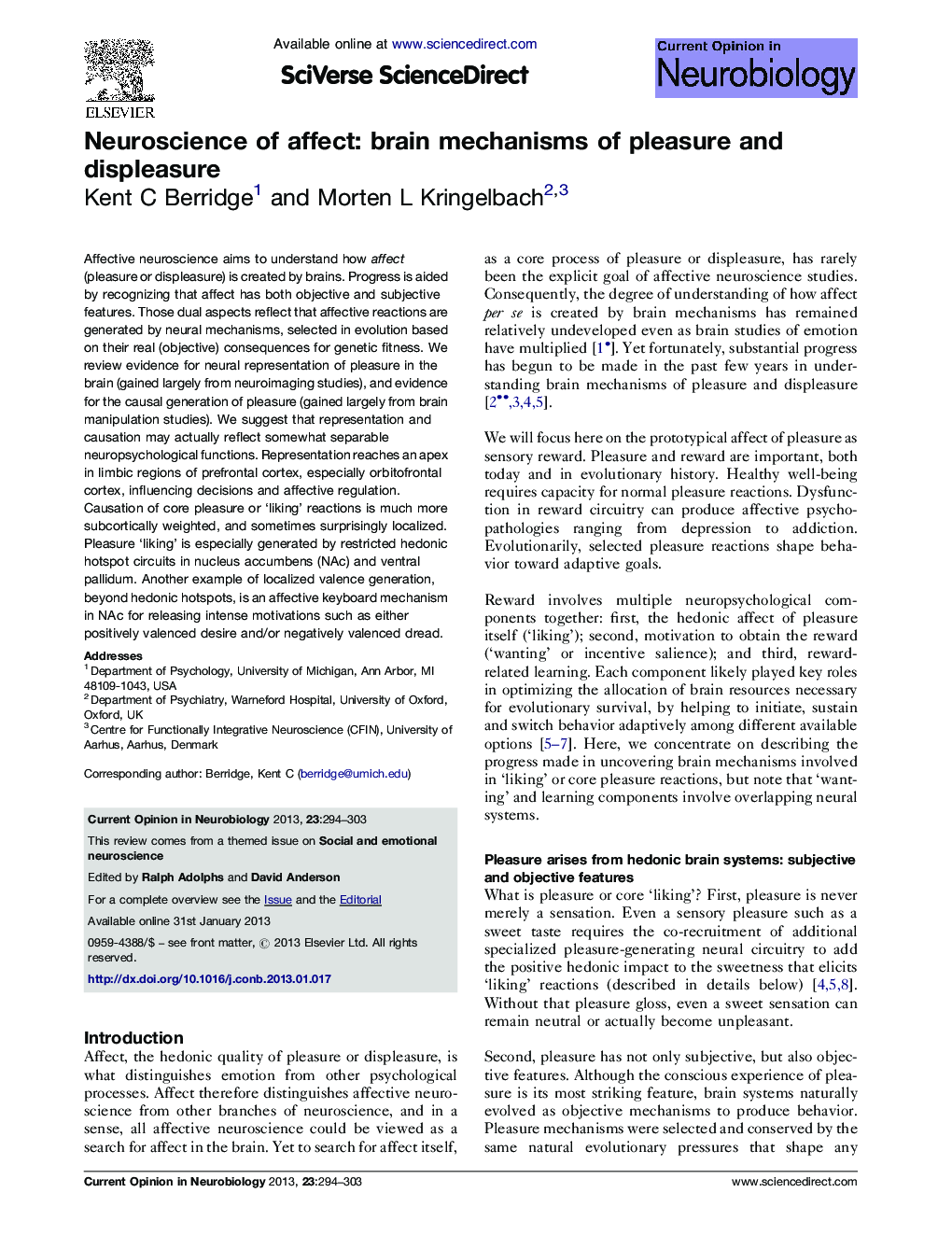| Article ID | Journal | Published Year | Pages | File Type |
|---|---|---|---|---|
| 6267158 | Current Opinion in Neurobiology | 2013 | 10 Pages |
Affective neuroscience aims to understand how affect (pleasure or displeasure) is created by brains. Progress is aided by recognizing that affect has both objective and subjective features. Those dual aspects reflect that affective reactions are generated by neural mechanisms, selected in evolution based on their real (objective) consequences for genetic fitness. We review evidence for neural representation of pleasure in the brain (gained largely from neuroimaging studies), and evidence for the causal generation of pleasure (gained largely from brain manipulation studies). We suggest that representation and causation may actually reflect somewhat separable neuropsychological functions. Representation reaches an apex in limbic regions of prefrontal cortex, especially orbitofrontal cortex, influencing decisions and affective regulation. Causation of core pleasure or 'liking' reactions is much more subcortically weighted, and sometimes surprisingly localized. Pleasure 'liking' is especially generated by restricted hedonic hotspot circuits in nucleus accumbens (NAc) and ventral pallidum. Another example of localized valence generation, beyond hedonic hotspots, is an affective keyboard mechanism in NAc for releasing intense motivations such as either positively valenced desire and/or negatively valenced dread.
Graphical abstractDownload high-res image (334KB)Download full-size imageHighlights⺠Pleasure and displeasure have objective as well as subjective aspects. ⺠Similar brain limbic circuits evolved in humans and other mammals. ⺠Pleasure is represented in orbitofrontal, insula, and cingulate prefrontal cortex. ⺠Pleasure is caused by subcortical hotspots in deeper brain networks. ⺠An affective keyboard mechanism in accumbens can release both fear and desire.
